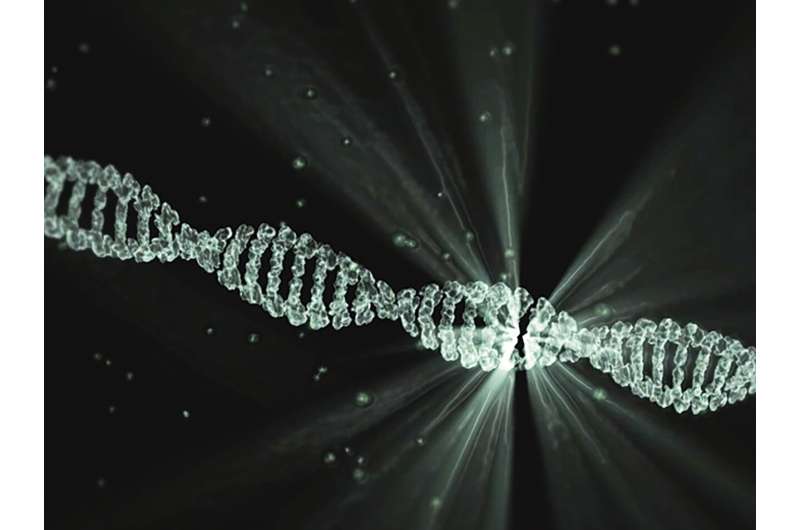This article has been reviewed according to Science X's editorial process and policies. Editors have highlighted the following attributes while ensuring the content's credibility:
fact-checked
trusted source
proofread
A DNA protein may be responsible for causing cancerous 'stress balls' in the body

In 2022, an estimated 7,000 Canadians were diagnosed with leukemia, a term used to define cancer of the blood cells. Of that 7,000, it is estimated that nearly half will face mortality. University of Saskatchewan (USask) College of Medicine graduate student Ananna Arna dedicated a research project to examine how genetics and DNA replication play a role in leukemia development.
"Like other cancers, leukemia is caused by genetic factors and environmental factors," said Arna. "Genetic alteration impairs normal blood cell production and overall body function."
If something is to alter genetics, this naturally means the alteration of DNA. Helicase proteins are responsible for "unzipping" normally double-stranded DNA into two single strands.
Under the supervision of USask College of Medicine professor Dr. Yuliang Wu (Ph.D.), Arna's study aims to understand how the actions of a specific DNA helicase—DEAD-box helicase 41 (DDX41)—can possibly contribute to the causation of specific leukemias in the body.
"Although scientists have identified a significant contribution of various helicases in cancer onset and progression, the mechanism of how a faulty DDX41 leads to cancer has not been explored," said Arna.
"DNA alteration of blood cells occur under various conditions; however, these changes are observed more commonly in helicases," said Arna. "We suspect DDX41 helicase plays a significant role in forming small granules that consist of many proteins and RNA molecules."
"These granules exist under normal conditions, but they increase in quantity when cells undergo trauma or stress conditions, and reduce in quantity when stress is gone," said Arna.
The research team suspected that DDX41 had the ability to cause a change in the way these 'stress balls' are formed. Disruptions to this process have the potential to lead to cancer development.
Some early research findings from Arna's team indicate that DDX41 is required for this granule formation. When mutations occur in DDX41, this can lead to alterations in the way granules are produced, opening the door for the creation of potentially negative cellular behavior.
"Myelodysplastic syndrome (MDS) and acute myeloid leukemia (AML) are two types of aggressive blood cancers with five-year survival rates of only around 25%," said Arna. "The incidence of AML and MDS increases with the aging population. Given that Canada's senior population is expected to grow by 68% over the next 20 years, the number of patients with MDS and AML is expected to increase significantly."
The results obtained from studying the actions of DDX41 will give medical practitioners an in-depth look into how leukemias develop, which can be implemented in the invention of new treatment options and in existing therapeutics.
Arna was actively involved in the project for nearly two years, mainly in designing, performing, and interpreting experiments. Another grad student will carry the work forward as Arna has taken on the challenge of medical school and has started her first year in the USask Doctor of Medicine program.
"Currently, I have started my first year at USask College of Medicine," Arna said, of her future plans. "I hope to serve as a family physician in Saskatchewan after I complete my degree."



















